The gear of a Roman soldier
These men were highly effective fighting machines, well trained and drilled to the maximum. The Roman soldier did not just fight they also built roads, bridges, even cities. To face everything on their campaigns these soldiers were also very well equipped. The idea for this post was to show you the reader, not just the well-known armor and weapons but the tools that kept the solider going in everyday life away from the battle.
Roman military service lasted for about 25 years and every citizen could enlist under the age of 45.Most soldiers enlisted as young as 14 years of age evidence of this are found at fallen soldiers graves showing us the years of service before their death. The Roman military took on Roman citizen and noncitizens these would join the Auxiliary forces or the Navy. Upon enlistment, each soldier or legionary would be paid a viaticum or bonus at some time this was the amount of 3 gold coins. Most soldiers spent their viaticum and their wages. Gambling was a common past time among them. There were exceptions, some soldiers saved their signing bonus and wages after their service was over they would get another payout and several acres of land in some of the Roman provinces. Most men would get married and take on agriculture or other trades after their service. Under the condition, they survived their military service.
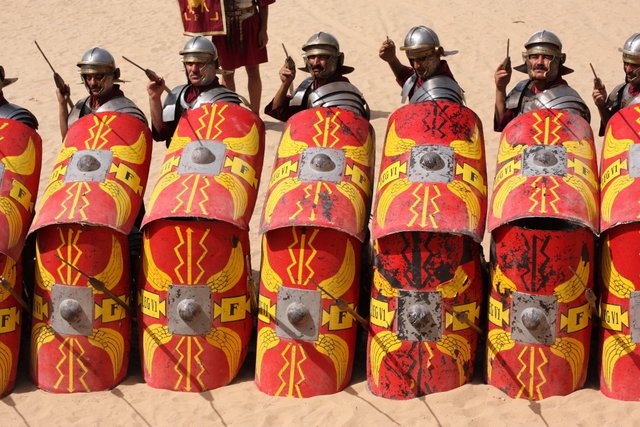
But before real combat experience, new recruits went through endless and vigorous training. To the Romans, the army was known as the exerticus which means training showing us the importance of training and discipline. This initial training period lasted for four months, in the soldiers went through weapons training, hand to hand combat and endless marches. The first and most important for new Roman soldiers was the so-called march and was practiced even before weapons training. At first, the soldiers were required to complete a 20 Roman mile march about 29 km in full gear weighing around 20 kg. The march needed to be finished in 5 hours, this was known as the military pace or regular step. After mastering the first marching exercise they went on to the so-called full pace or fast step. During the fast step, the soldiers needed to finish a 24 Roman mile march in 5 hours again in full gear. Each march starts with the right foot as the left was see as unlucky.
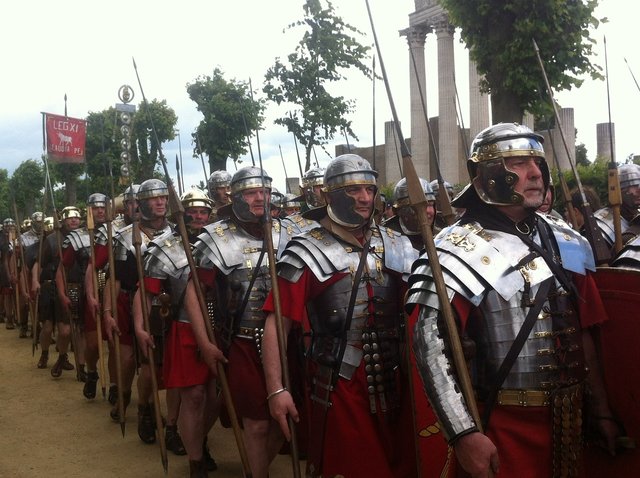
Only after mastering the second march the solider would partake in weapons training. The training sessions would be conducted in open field near the base camp or in later times even under roofed halls depending on the location of the training, so the soldiers could be trained during the winter months. For weapons training wooden swords and javelins were used. The wooden weapons were twice as heavy as the real weapons so the solider would develop muscle this way it was an easier transition to metal weapons. After managing the basics soldiers would practice spear throwing with wooden dolls called quintain and close combat training called armatura these sessions were usually one on one between the soldiers. Some of these were held in small amphitheaters like gladiator games. Along the combat training, the soldiers were drilled hard, practicing battle formations and tactics. Discipline was strict and disobeying orders were punished with flocking and hard labor. High standards of discipline are one of the reasons the Roman military was so efficient. After the four months of training, the Roman soldier would swear a oath to be loyal to the Senate or later on the Emperor for the greater good of the empire.
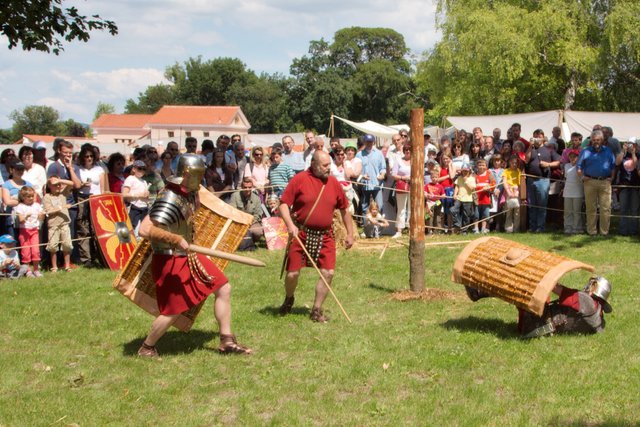
The basic footwear of a Roman soldier was the boot or sandal called calige. These were not like the ordinary sandals worn by civilians these were made a lot more durable, thick leather used and the sole was fitted with iron studs for better grip. The Basic clothing was the tunic colored red as it was the color of the army. The tunic was worn underneath the armor along with a white scarf called focale the scarf became part of the Roman soldiers outfit and it was used to protect the skin of the neck rubbing against the armor.
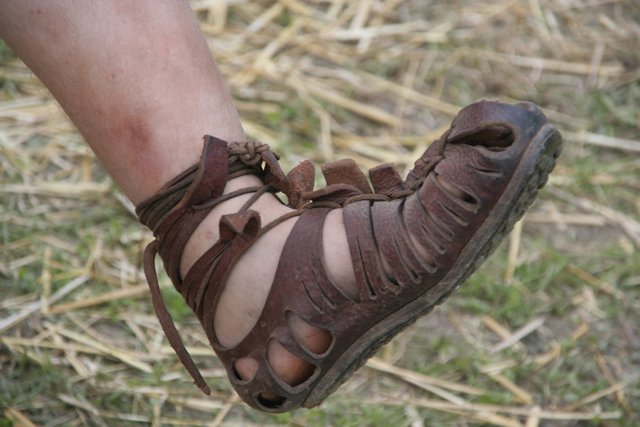
An important part of the soldier's equipment was the sarcina or marching pack. Beside shield, weapons, and armor the solider would carry his sarcina. During earlier times the soldiers marching pack would be carried by pack animals. Due to the reforms of Gaius Marius, the soldiers would carry their own in the end this helped to cut down the number of pack animals and increasing the mobility of the army. The soldier had everything he needed in his sarcina to build his camp.
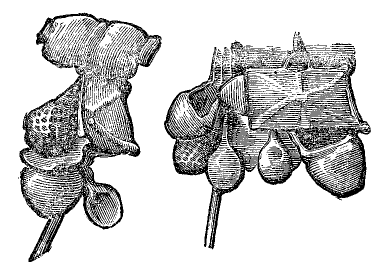
Among the things was the loculus or satchel, none of these has been found in archaeological excavations and depictions can be seen on Trajan's column. We know for sure that it was made of leather and the solider used it most likely to store his personal effects or extra food for the road.
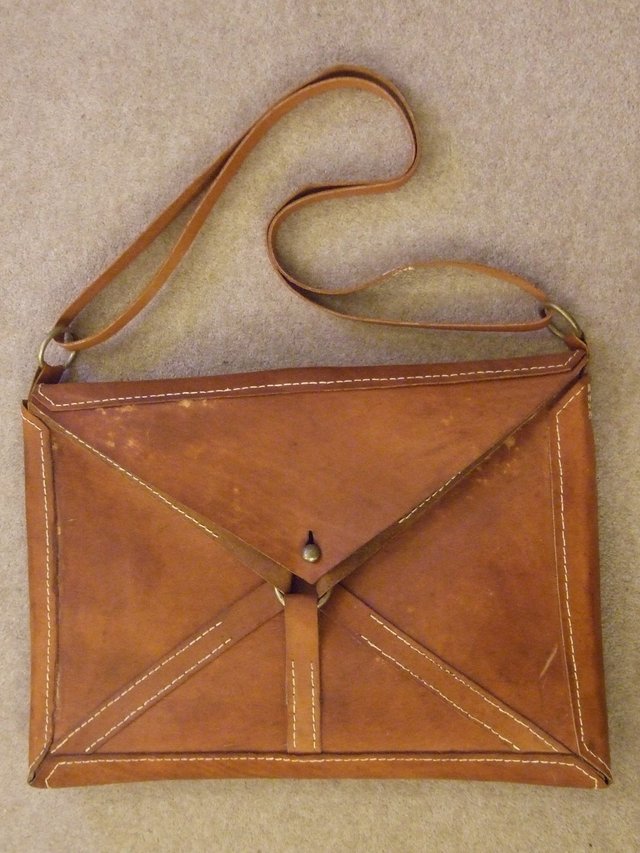
On their march, every soldier would carry his on the water in the waterskin or water flask along with food rations to last them to 15 days. To prepare their food soldiers are carrying some cooking equipment like a cooking pot, a mess tin, skewers, and the patera a large and shallow bowl for drinking or to perform sacrifices like the libation rituals.
For camp entrenchment, each soldier would carry either a turf cutting tool, a shovel or batillum, a large basket to move earth, or a mattock dolabra, for barricading the camp each soldier would carry 2 stakes called sudis.
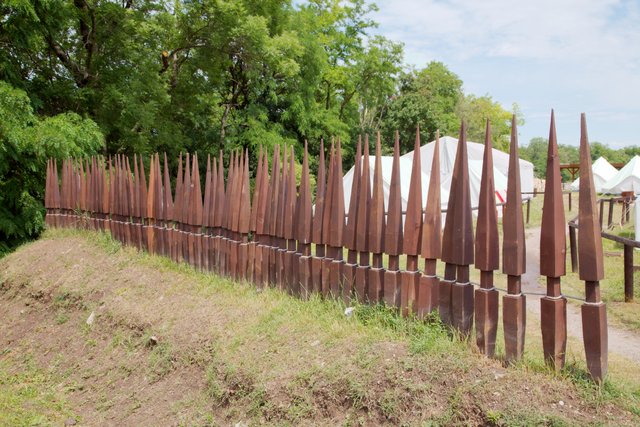
For camp entrenchment, each soldier would carry either a turf cutting tool, a shovel or batillum, a pickaxe, a large basket to move earth, or a mattock dolabra, for barricading the camp each soldier would carry 2 stakes called sudis about 1.5 meters long.
These were the essential items a Roman soldier would carry around during his service for the empire. Through the equipment, one can see that it was not just battle after battle and among the solider were many specialist. In this post, I show you the noncombat equipment and I would be really glad about some feedback from you.
I hope you enjoyed my post if you have any questions please let me know in the comments below.
Good luck to all of you until next time @zija2022.
Bibliography
- https://en.wikipedia.org/wiki/Legionary
- https://en.wikipedia.org/wiki/Roman_infantry_tactics
- https://en.wikipedia.org/wiki/Roman_military_personal_equipment
- Peter Connoly, 1997, The Roman World, The Legionary, Oxford.
Congratulations! This post has been chosen as one of the daily Whistle Stops for The STEEM Engine!
You can see your post's place along the track here: The Daily Whistle Stops, Issue #126 (5/6/18)
The STEEM Engine is an initiative dedicated to promoting meaningful engagement across Steemit. Find out more about us and join us today.
@thesteemengine Thank you very much for mentioning my post in the daily Whistle Stops, it is a honor to be chosen among so many good writers.
It is incredible the amount of things these soldier had to carry. And that training surely was as hard as it can get.
Lucky us we are living in modern times.
haha yes over 20 kilograms a lot, they were in good shape for sure :)
Thanks for reading @dedicatedguy
love these sandals, I'm sure I have seen them somewhere.. Versace ?
hahah @highonthehog it must be Versace, these are timeless :D
i might still have the pair in my basement - will give it for free if u want , hhahaha XD
Congratulations @zija2022! You have completed some achievement on Steemit and have been rewarded with new badge(s) :
Click on any badge to view your own Board of Honor on SteemitBoard.
For more information about SteemitBoard, click here
If you no longer want to receive notifications, reply to this comment with the word
STOPSoldier's life - a steep price to pay for a couple of acres. I would say this is somewhat comparable to practices in today's strongest armies
@spalatino history is repeating itself, then slaves were the cheapest labor force and for most this was the way out of poverty. The army was the only way lower classes could climb the social ladder.
Nice post man! It isn't weird that Romans had the most powerful army on the continent during their time. It was hard to match such well trained and organized army!
Yea they knew what they were doing :)
Reading your posts is like reading a book, this is so much more than just blogging, this is educating. Thank you for bringing these kinds of text to this platform 💚
Thank you @zen-art for the kind words :D
What a vigorous training, I guess they must have been undefeatable. Nice writeup.
For some time they were, the army was also very well organized. Thanks for reading @elizabethh
Congratulations @zija2022! You have completed the following achievement on Steemit and have been rewarded with new badge(s) :
Click on the badge to view your Board of Honor.
If you no longer want to receive notifications, reply to this comment with the word
STOPDo not miss the last post from @steemitboard:
SteemitBoard and the Veterans on Steemit - The First Community Badge.
Congratulations @zija2022! You have completed the following achievement on the Steem blockchain and have been rewarded with new badge(s) :
Click here to view your Board of Honor
If you no longer want to receive notifications, reply to this comment with the word
STOPDo not miss the last post from @steemitboard: